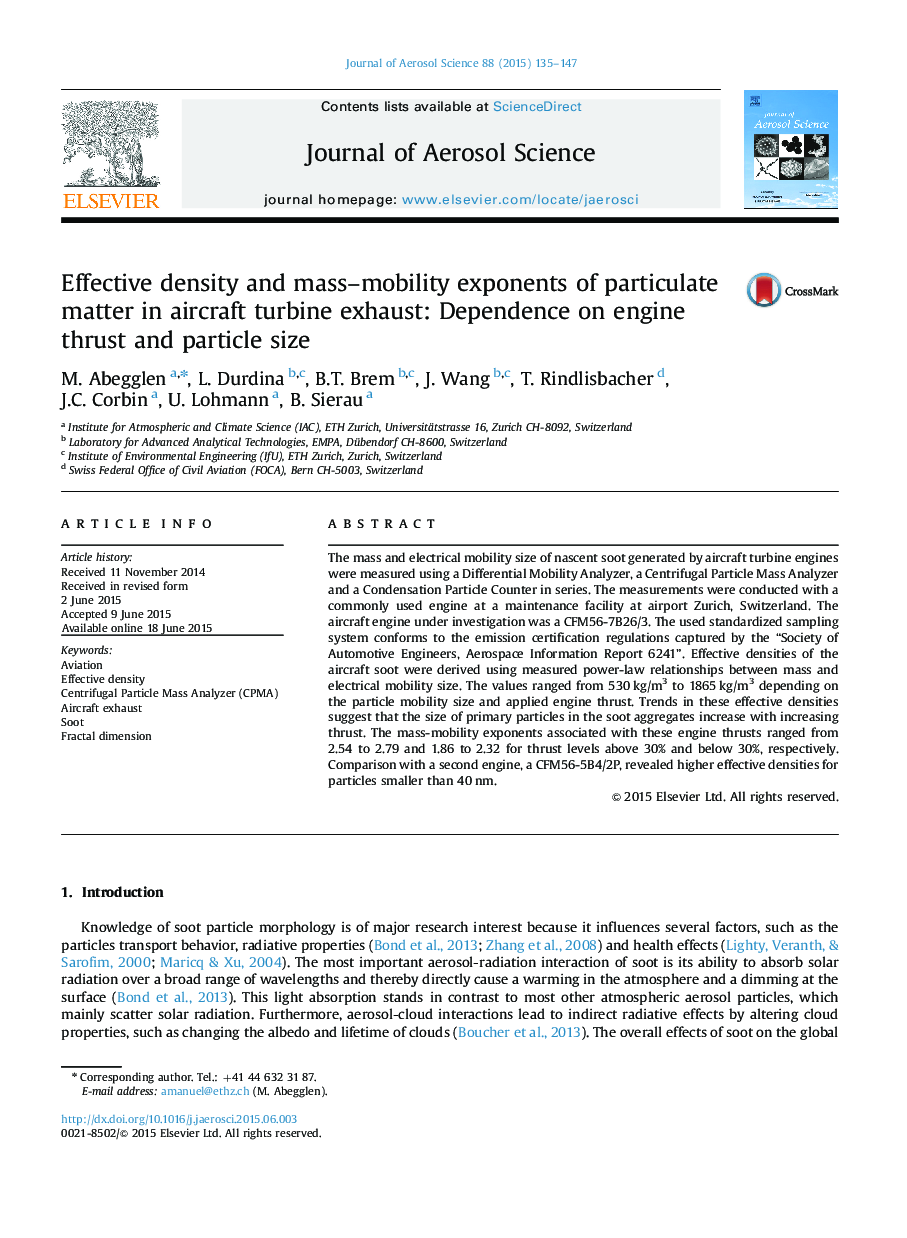| Article ID | Journal | Published Year | Pages | File Type |
|---|---|---|---|---|
| 6344442 | Journal of Aerosol Science | 2015 | 13 Pages |
â¢We measured effective density from soot emitted by a CFM56-7B26/3 aircraft engine.â¢We measured effective density of size-selected particles at various engine thrusts.â¢We compare a CFM56-7B26/3 to a CFM56-5B4/2P engine using own and literature values.â¢The effective density decreases with increasing particle mobility size.â¢The effective density increases with increasing engine thrust.
The mass and electrical mobility size of nascent soot generated by aircraft turbine engines were measured using a Differential Mobility Analyzer, a Centrifugal Particle Mass Analyzer and a Condensation Particle Counter in series. The measurements were conducted with a commonly used engine at a maintenance facility at airport Zurich, Switzerland. The aircraft engine under investigation was a CFM56-7B26/3. The used standardized sampling system conforms to the emission certification regulations captured by the “Society of Automotive Engineers, Aerospace Information Report 6241”. Effective densities of the aircraft soot were derived using measured power-law relationships between mass and electrical mobility size. The values ranged from 530Â kg/m3 to 1865Â kg/m3 depending on the particle mobility size and applied engine thrust. Trends in these effective densities suggest that the size of primary particles in the soot aggregates increase with increasing thrust. The mass-mobility exponents associated with these engine thrusts ranged from 2.54 to 2.79 and 1.86 to 2.32 for thrust levels above 30% and below 30%, respectively. Comparison with a second engine, a CFM56-5B4/2P, revealed higher effective densities for particles smaller than 40Â nm.
